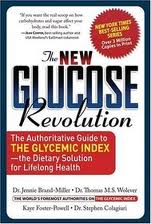Shortly after you eat carbohydrates your blood sugar level rises. Some foods cause a faster rise over the first two hours than others – for example, a donut will cause a faster rise over two hours than an apple (see the film below). As a result of this phenomenon most carbohydrate foods have been tested and given a number (pure glucose is given the number 100, hummus is 6, russett potato is 111, a yam is 70). The theory was that if you eat foods that have a lower glycemic index number (less than 55) you should have better health. This spawned an entire industry of books describing the “Glycemic Index Diet” or “Glycemic Load Diet.”
The promise: if you eat low glycemic foods <55 you will have less diabetes, heart disease, cancer – pick one. The reality – doesn’t work. Long term studies now show that it is just fine to eat some of those low glycemic foods and in fact, better for you.
Twix Bar or Potato

Since the glycemic index of this food is less than 55 it would be one of those foods you should eat. Since a potato’s index is over 100 you should eat more Twix and less potatoes. Now we know the diet makes no sense.
But think about it – while this diet was all science, with testing and tables – it lacked a bit of common sense. Take the premise- according the Glycemic Load or Diet I should have a Twix Bar instead of a potato (glycemic load 49 vs. 111). Now which do you think I should eat?
But now comes a report stating that when you test it – a high glycemic diet isn’t any worse than a lower one. Physicians tested the glycemic index to see if patients following a “healthy diet” but not necessarily the glycemic index diet would have better outcomes from cardiovascular labs. It turns out that both did well. Or to quote the study:
In the primary diet contrast, the low–glycemic index, low-carbohydrate diet, compared with the high–glycemic index, high-carbohydrate diet, did not affect insulin sensitivity, systolic blood pressure, LDL cholesterol, or HDL cholesterol but did lower triglycerides from 111 to 86 mg/dL (−23%, P ≤ .001).
So instead of paying attention to how a particular fruit or vegetable will “spike” blood sugars in the short term, what is more important is simply eating more fruits and vegetables.
The glycemic index values of individual foods were calculated primarily using published tables.2 High– and low–glycemic index meals were constructed around similar categories of foods that have different glycemic index to achieve the target contrast between high– and low–glycemic index diets (eg, instant potatoes vs pasta; instant oatmeal vs steel cut oats; white bread vs whole kernel bread; bananas vs apples) (eTable 1 in Supplement 2). The glycemic index values of the breads were measured directly, in vivo.1 Fiber intakes averaged 31 g in the high–glycemic index and 35 g in the low–glycemic index diets. The diets also provided similar amounts of other nutrients that might affect trial outcomes.- from the study
Here is a video I did a few years ago talking about some basics with the Glycemic Index- and the obvious basis still holds true. But some of the specifics – well, not so much.
In science it is good to test a theory- not just read a book, or base things on a few simple thoughts, but test them. This is what happens- we discover our notions are just a bit off. What is good about being wrong- we get closer to the truth and how to help people eat more sensibly.
You know all those ads lead you in with “this one weird trick” or avoid this food to lose a belly – and it shows a banana – well, its ok to eat that banana.
Here is another important bit: it is ok for diabetics to eat fruit. The short term of blood sugar spikes are not important as the long-term consequence of eating healthy. Because of bad advice many diabetics drink juice. Now we can go back and tell them it is ok to have that fruit. Something we all felt, in our gut, was true, but had been thinking the blood sugar spike was bad.
As with all diets- this spawned a number of “best selling books,” and gave healthnut nerds numbers we could post about which is better or worse, and feel superior in our knowledge of food. But it has fallen – here is the simple truths we still know about food:

The Glycemic Index became a fad diet that spawned a series of best selling books – and a lot of speculation about how the body worked.
Fruits and vegetables are just fine to eat.
Starches are fine also (be careful with Rice and Arsenic) and The Potato: Healthier Than You Think
The bad fat isn’t bad and the good fat isn’t good
We have learned that red meat isn’t bad and answered the question:
Meat and Mortality: Does Eating Meat Decrease Your Lifespan?
Those who try to convince us that being a vegetarian or Vegan is healthy isn’t true – even with their “documentary” Forks Over Knives.
Then when my friend Evo- who has done the beer and sausage diet for many years running proved that beer isn’t bad – that portion control is good.
Reference:
Sacks FM, Carey VJ, Anderson CM, et al. Effects of High vs Low Glycemic Index of Dietary Carbohydrate on Cardiovascular Disease Risk Factors and Insulin Sensitivity: The OmniCarb Randomized Clinical Trial. JAMA. 2014;312(23):2531-2541. doi:10.1001/jama.2014.16658.
